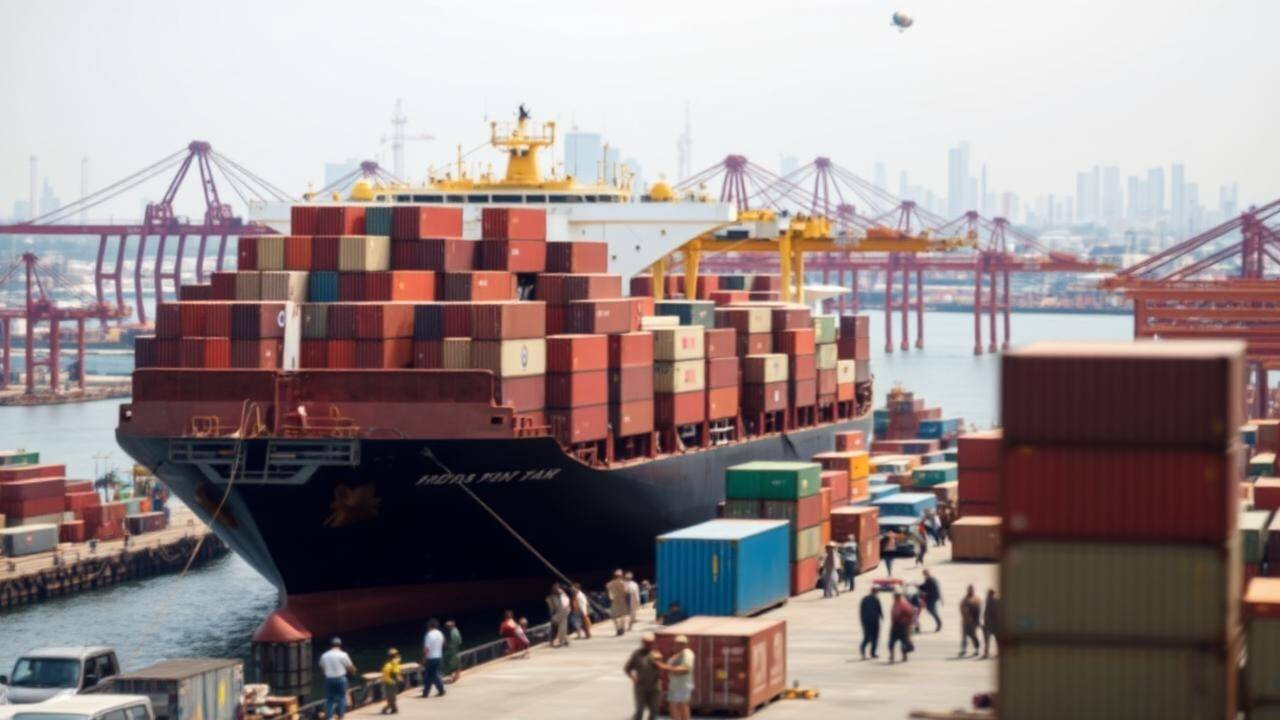Union Bank of India projects India’s current account deficit (CAD) may nearly double to 1.2% of GDP in FY26 due to rising trade and geopolitical tensions. A widened merchandise trade deficit and the recent US tariff hikes on key sectors are major concerns. Resilient services exports and remittances offer some support, but persistent trade tensions pose a downside risk.
Navigating India’s Current Account: A Look at the Widening Deficit
India’s economic landscape is a dynamic tapestry, constantly shifting with global winds and internal pressures. One thread that’s currently drawing attention is the nation’s current account deficit (CAD), the difference between the inflow and outflow of foreign currency. Recent reports suggest we might be facing a bit of a headwind in this area, and understanding what’s happening is crucial for businesses and individuals alike.
So, what’s the buzz? Well, the forecast paints a picture of a potentially expanding current account deficit. Projections indicate that the CAD could nearly double by fiscal year 2026, reaching approximately 1.2% of the GDP. That’s a notable increase from the anticipated 0.7% for the current fiscal year. While not an immediate cause for alarm, it definitely warrants a closer look.
Decoding the Deficit: What’s Driving the Shift?
Several factors are contributing to this projected widening. A key player is the anticipated rise in imports. As India’s economy continues to grow, so does its demand for goods and services from other countries. This is particularly true for essential commodities like crude oil, where India relies heavily on imports. A global surge in commodity prices, combined with increased domestic demand, could significantly inflate the import bill. Increased gold imports are also a factor, especially in the wake of price drops.

Furthermore, global economic uncertainties are playing a role. A potential slowdown in global growth could dampen demand for Indian exports, impacting foreign exchange earnings. This is crucial, as healthy export numbers are vital for offsetting the import burden. Geopolitical tensions and fluctuating exchange rates add another layer of complexity, making accurate forecasting a challenging task.
Not All Gloom and Doom: Silver Linings in the Forecast
It’s important to avoid painting too bleak a picture. India’s economic fundamentals remain relatively strong. The country boasts a large and growing domestic market, a vibrant entrepreneurial ecosystem, and a steadily improving infrastructure. Moreover, foreign direct investment (FDI) continues to flow into India, attracted by its long-term growth potential. This influx of capital helps to finance the current account deficit and bolster the rupee’s stability.
Also, India’s services sector remains a bright spot. The country is a major exporter of IT and business process outsourcing (BPO) services, generating substantial foreign exchange revenue. Continued growth in this sector can help offset some of the pressure from rising merchandise imports. The government’s focus on boosting domestic manufacturing through initiatives like “Make in India” is also expected to reduce import dependence in the long run, although the positive effects may take time to fully materialize.
Navigating the Waters: Implications and Strategies
So, what does this all mean for businesses and individuals? A widening current account deficit can put downward pressure on the Indian rupee. This could lead to higher import costs for businesses and potentially inflationary pressures for consumers. The Reserve Bank of India (RBI) may intervene in the foreign exchange market to stabilize the rupee, but this can also have implications for interest rates and liquidity in the financial system.
Businesses need to be prepared for potential currency volatility and rising input costs. Strategies like hedging currency risk and diversifying supply chains can help mitigate these challenges. Individuals may also need to adjust their spending and investment plans in light of potential inflationary pressures.
The government and the RBI have a crucial role to play in managing the current account deficit. This includes promoting export competitiveness, attracting foreign investment, and managing inflation. Prudent fiscal policies and structural reforms are essential for ensuring long-term economic stability. For insights on other economic challenges and opportunities, check out our article on [India’s evolving trade relationships](internal-link-to-related-content).
Charting the Course Ahead
While the projected widening of India’s current account deficit presents a challenge, it’s not insurmountable. By understanding the underlying drivers, adopting proactive strategies, and implementing sound economic policies, India can navigate these waters and maintain its strong growth trajectory. The key lies in fostering a resilient and diversified economy that can withstand global shocks and capitalize on its inherent strengths. While projections offer a glimpse into potential scenarios, the future ultimately depends on the actions taken today to shape India’s economic destiny.







